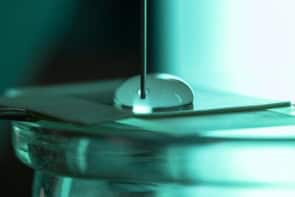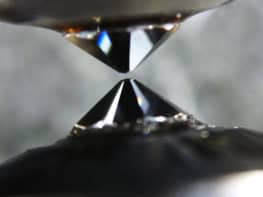The frustrating cracks that appear on newly painted surfaces could soon be a thing of the past. Physicists in India have calculated how the properties of paint, such as the size of the constituent particles, affect its ability to stay smooth while drying, which could help manufacturers to develop more effective crack-free paints (Phys. Rev. Lett. 98 218302).
Paints are usually made by dispersing tiny particles, some of which are pigment, in a solvent such as water. As paint dries, its elastic “skin” – known as the meniscus – contracts and inflicts stress on the bulk particles, which deform as a result. But beyond a certain stress the particles can deform no more, and the paint must instead alleviate stress by cracking.
Not all paints crack, however. Because a meniscus can only contract so much – and therefore can only exert a maximum stress – particles with a sufficiently high stress limit will avoid being fully deformed, and no cracks will form. With this in mind, Mahesh Tirumkudulu and Karnail Singh of the Indian Institute of Technology in Mumbai have now determined how particle properties can be tailored to increase their stress limit.
The pair realized that the stress limit is directly related to how drying paint tries to balance the potential energy of the meniscus and the potential energy of the bulk particles. Certain particle properties – such as their size, “shear modulus” or strength, and how tightly they are packed together – affect this balance, and from this calculated how thick a paint can be applied without cracks forming. They tested their theory by drying different thicknesses of silica and acrylic dispersions, and found the properties did indeed affect the maximum thickness as predicted.
Tirumkudulu told Physics Web that the research could help paint manufacturers optimize their products. For example, bigger particles that adopt more loosely-packed structures would be less likely to crack when applied thickly. “I should admit, though, that commercial paints and coatings are much more complicated systems containing a number of additives,” he added. “However, we believe that this is the first step in understanding the complex phenomenon of cracking in paints and coatings.”



